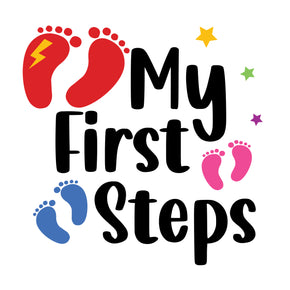Choosing Shoes For Your Child With Autism
At My First Steps we know selecting the right shoes for your child with autism can be a crucial decision. Not only do you want your child to feel comfortable, but you also want their footwear to accommodate their unique sensory needs and support their overall well-being. As a parent or caregiver, understanding the features to look for in shoes for children with autism can make the process easier and ensure your child's comfort and happiness.
Here are our 7 key features for selecting shoes for your child with Autism;
Comfort is Key First and foremost, prioritise comfort when choosing shoes for your child with autism. Look for shoes with soft, breathable materials that won't irritate your child's skin or cause discomfort. Consider options with cushioned insoles and ample padding around the ankle for added support and comfort throughout the day. Shoes that are too tight or restrictive can exacerbate sensory sensitivities and lead to discomfort or meltdowns.
Seamless Design Many children with autism are sensitive to textures and seams in their clothing and footwear. Opt for shoes with seamless designs to minimise sensory triggers and ensure a smooth, irritation-free experience for your child. Seamless shoes reduce the likelihood of irritation caused by seams rubbing against the skin, allowing your child to focus on their activities without distractions.
Adjustable Straps or Velcro Closures Children with autism may struggle with fine motor skills, making it challenging for them to tie shoelaces independently. Look for shoes with adjustable straps or Velcro closures that allow for easy on-and-off access without the need for tying shoelaces. Adjustable straps also enable you to customize the fit of the shoes to accommodate your child's unique foot shape and size, ensuring optimal comfort and support.
Flexible Soles Flexible soles are essential for allowing natural foot movement and sensory feedback. Choose shoes with flexible soles that bend and move with your child's feet, promoting a more natural gait and providing sensory stimulation. Avoid shoes with stiff or rigid soles, as they can limit mobility and cause discomfort for children with autism who may have sensory sensitivities.
Breathability and Ventilation Proper airflow is crucial for maintaining foot health and preventing discomfort, especially for children who may struggle with sensory processing issues. Look for shoes with breathable materials and ventilation features to keep your child's feet cool and dry throughout the day. Breathable shoes help prevent moisture buildup and reduce the risk of skin irritation or fungal infections, promoting overall foot health and comfort.
Lightweight Construction Heavy shoes can weigh down your child's feet and impede mobility, leading to fatigue and discomfort. Choose lightweight shoes that provide ample support without adding unnecessary bulk or weight. Lightweight shoes allow for greater freedom of movement and reduce fatigue during physical activities, helping your child stay comfortable and active throughout the day.
Supportive Arch and Heel Proper arch and heel support are essential for maintaining healthy foot alignment and preventing discomfort or injury. Look for shoes with supportive arches and cushioned heels that promote proper foot alignment and reduce strain on the joints and muscles. Supportive footwear can help alleviate foot fatigue and discomfort, especially for children who spend long hours on their feet.
Here are our 3 key brands for your child with Autism;
Biomecanics - Seam free design with maximum support
Geox - Ultimate breathability with a huge range of styles
Pablosky - Soft leathers, light weight designs and brilliant support for arches and heels
Book An In Store Appointment in Ennis or Galway or by Online Zoom Here
In conclusion, choosing the correct shoes for your child with autism involves considering factors such as comfort, seamless design, adjustability, flexibility, breathability, lightweight construction, and supportive features. By prioritising your child's unique sensory needs and preferences, you can select shoes that provide optimal comfort, support, and mobility, allowing your child to navigate the world with confidence and ease.

